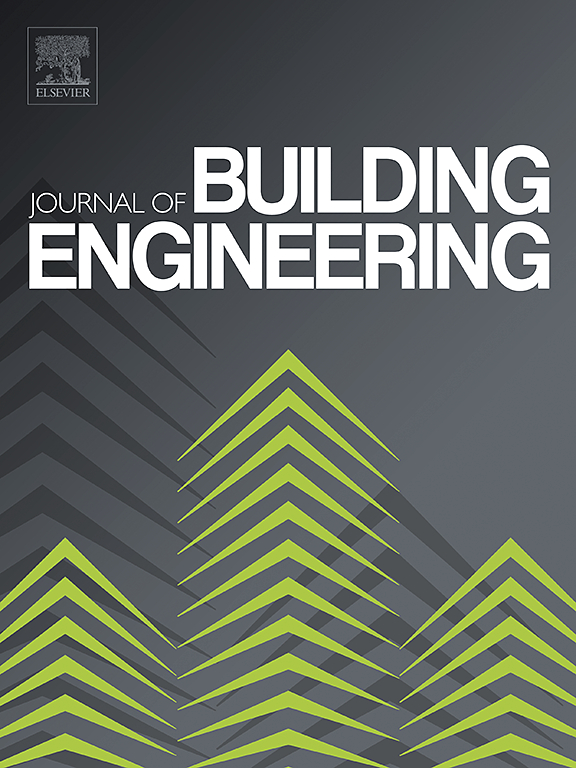Development and tests of X-shaped buckling-restrained braces with rotatable middle connections
IF 6.7
2区 工程技术
Q1 CONSTRUCTION & BUILDING TECHNOLOGY
引用次数: 0
Abstract
To avoid negative in-plane interaction and to further improve hysteretic behavior of X-shaped buckling-restrained braces (XBRBs), a new assembled configuration with rotatable middle connections was proposed and quasi-static tests were conducted to mainly explore the impacts of in-plane gaps between restraining members and encased braces, overall and local restraint capacity of restraining members, etc. on seismic behavior of XBRBs. The diagonal BRBs (DBRBs), as well as two modified assembled XBRBs with fixed middle connections by welding, were also tested to make a direct comparison. Tests reveal that, with the same flat plates as restraining members, the out-of-plane overall flexural buckling of the DBRB with a smaller restraining ratio of 0.72 occurred earlier but the XBRB exhibited stable hysteretic curves without buckling due to middle bracing action. In-plane gaps from 1 mm to 3 mm and 5 mm have little impacts on both the interaction between the two braces and shapes of hysteretic curves for all XBRBs while inducing earlier fracture of plate braces and reducing cumulative inelastic deformation and energy dissipation capacities about 8.5 %–15.1 % and 7.4 %–9.2 %, respectively. Besides, the effects of negative interaction between two braces on the XBRBs with either rotatable or fixed middle connections, in which appropriate axial gaps were reserved between restraining members and two encased braces at lower ends, can be avoided, facilitating predictions on the hysteretic responses of XBRBs with steady tangent stiffness in applications. Both DBRBs and XBRBs with enough restraint capacity exhibited good ductility ratios from 8.9 to 12.4 and energy dissipation prior to eventual tensile failure of encased braces. In addition, out-of-plane local flexural capacity of the middle rotatable connections should be ensured, for example by adding necessary stiffeners, to further improve the hysteretic behavior and to avoid local bending failure.
求助全文
约1分钟内获得全文
求助全文
来源期刊

Journal of building engineering
Engineering-Civil and Structural Engineering
CiteScore
10.00
自引率
12.50%
发文量
1901
审稿时长
35 days
期刊介绍:
The Journal of Building Engineering is an interdisciplinary journal that covers all aspects of science and technology concerned with the whole life cycle of the built environment; from the design phase through to construction, operation, performance, maintenance and its deterioration.
 求助内容:
求助内容: 应助结果提醒方式:
应助结果提醒方式:


